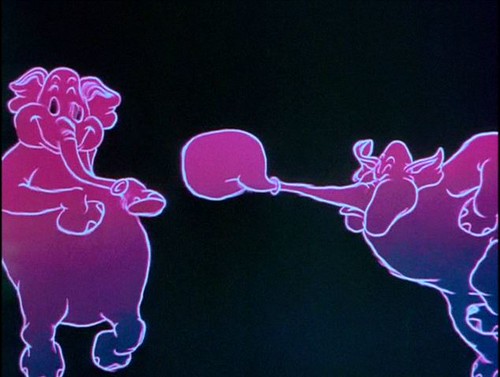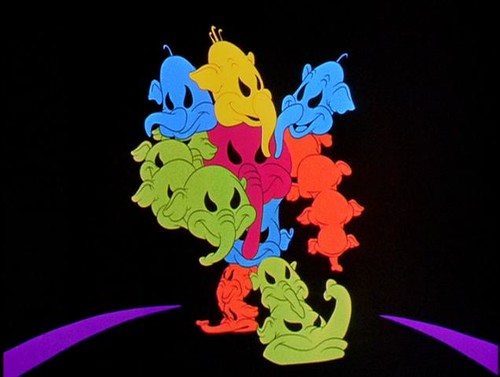The question is from “Viscosity,” p. 32, and “real” is italicized. It’s a good question, one I often ask myself from within my own worldview – you’ll recall l concluded last time with a confession that I live a somewhat different ethos from the one through which Morton is writing, and so the answer I seek likely has a different valence and distribution. But I suspect we’re using those word forms under similar existential pressure.
* * * * *
The chapter opens:
I do not access hyperobjects across a distance, through some transparent medium. Hyperobjects are here...Like faces pressed against a window, they leer at me menacingly...From the center of the galaxy, a supermassive black hole impinges on my awareness (p. 27)
Don’t ask how it does that, for Morton tell us “as if... in the car next to me...” Just believe it and roll on.
Later:
Hyperobjects are agents. They are indeed more than a little demonic, in the sense that they appear to straddle worlds and times, like fiber optic cables or electromagnetic fields. And they are demonic in that through them causality flows like electricity. (p. 29)
Causality flows?
Bosh!
Why not? And you know, Disney was there long before he started doing PR for atomic energy (Our Friend the Atom). See:
Now THAT’s causality, elephants-demons-‘lectricity, straight out of Dumbo, 1941. What WERE they thinking? Viscous pink elephants.
I digress.
Another passage from Morton:
For some time we may have thought that the U-bend in the toilet was a convenient curvature in ontological space that took whatever we flush down it into a totally different dimension called Away, leaving things clean over here. Now we know better: instead of the mythical land Away, we know the waste goes to the Pacific Ocean or the wastewater treatment facility. Knowledge of the hyperobject Earth, and of the hyperobject biosphere, presents us with viscous surface from which nothing can be forcibly peeled. There is no Away on this surface, no here and no there. (p. 31)
And so goes another Morton set piece, there are several in this chapter; they’re part of his rhetorical method. For now, I note that typing this particular passage brought to mind the refrain of that viscous classic of 19th American tunesmithing, Dixie. According to the Wikipedia, the song is somewhat clouded in mystery and its lyrics jes grew and grew. But it’s the refrain, of course, that makes this tune into a celebration of Away:
I wish I was in the land of cotton,old times there are not forgotten,Look away, look away, look away, Dixie Land.In Dixie Land where I was born in,early on a frosty mornin',Look away, look away, look away, Dixie Land.Then I wish I was in Dixie, hooray! hooray!In Dixie Land I'll take my standto live and die in Dixie,Away, away, away down South in Dixie,Away, away, away down South in Dixie.
But the mirror, that all but takes over this chapter. Morton mentions it on the chapter’s opening page (p. 27) and brings it back on the next:
I feel like Neo in The Matrix, lifting to his face in horrified wonder his hand coated in the mirrorlike substance into which the doorknob was dissolved, as his virtual body begins to disintegrate. “Objects in mirror are closer than they appear.” The mirror itself has become part of my flesh. Or rather, I have become part of the mirror’s flesh, reflecting hyperobjects everywhere. (p. 28)
Neo returns on page 34, last paragraph, and is prefigured in the immediately preceding paragraph, which is about the test site of atomic weapons that Oppenheimer established in New Mexico: Trinity. And where there’s Trinity – voilà! – there’s Neo:
...Neo touches the mirror...the mirror seems to melt and coat his flesh, and he raises his hand and regards it with fascinated horror. The mirror has ceased to be merely a reflective surface; it has become a viscous substance that adheres to his hand. The very thing that we use to reflect becomes an object in its own right, liquid and dark like oil in the dim light of the room in which Neo has taken the red pill. The usual reading of this scene is that Neo’s reality is dissolving. If we stay on the level of the sticky, oily, mirror, however, we obtain an equally powerful reading. It’s not realty but the subject that dissolves, the very capacity to “mirror” things, to be separate from the world like someone looking at a reflection in a mirror – removed from it by an ontological sheet of reflective glass. (pp. 34-35)
I note that the film’s premise is that Neo’s living in a vat and his experience is given to him by a computer. The film itself couldn’t exist without computers, which crunch the bits that level everything into one informatic substance that variously appears as your hand, a mirror, or even Arnold Schwarzenegger’s opponent in Terminator 2: Judgement Day.
Back to Morton, who keeps the mirror motif going on the next page – “Neo’s melting mirror…”, “The mirror of science melts…” (p. 36) – and closes the chapter on page 37 with remarks about the quantum realm and about relativity.
* * * * *
I no more understand the deep physics of our era than Morton does, no less either, but likely differently, and neither of it is technically expert. Still and all, I do like this very much: “Viscosity is a feature of the way in which time emanates from objects, rather than being a continuum in which they float ” (p. 33). That time emanates from objects, probably not how it’s put Relativity for Dummies, but it resonates usefully. And I’m pretty sure that you’d get in trouble if you stuck that notion of viscosity on an answer sheet in a course in material science. But Morton knows that too. I’ll go with the flow on this one.
* * * * *
No doubt it is because they are viscous that “hyperobjects end the possibility of transcendental leaps ‘outside’ physical reality.” No matter how high you leap, the hyperobject extents its tendrils to follow.
* * * * *
Finally, I note that Trinity Mirror is the largest newspaper publishing group in Britain, with the Daily Mirror and Sunday Mirror its flagship publications. Is that the matrix that situates Morton, who is from Britain, with Neo, his mirror, and his Trinity?
* * * * *
Previously: Reading Hyperobjects 1: The World has Ended


No comments:
Post a Comment